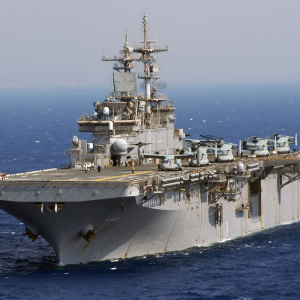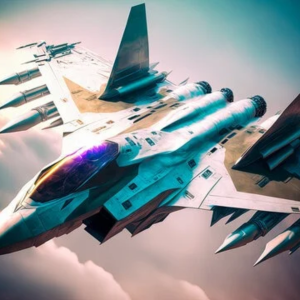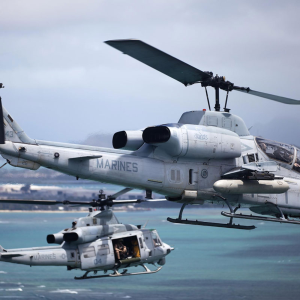The Bf 109 was designed by Willy Messerschmitt and Robert Lusser, who worked at Bayerische Flugzeugwerke during the early to mid-1930s. It had been conceived as an interceptor, although later models were developed to fulfill multiple tasks, serving as bomber escort, fighter-bomber, day- and night-fighter, all-weather fighter, ground-attack aircraft, and reconnaissance aircraft.
The German Bf 109 became infamous during the Battle of Britain – The Messerschmitt Bf 109 is the most famous German aircraft of the Second World War.
In many ways, the aircraft mirrored Nazi Germany’s Luftwaffe.
It maintained total dominance in nearly all victories in the skies over Europe, struggled to retain the superiority it achieved, and was met with defeat in the face of overwhelming numbers of Allied aircraft.
During the early campaigns in Europe, the Bf 109 proved to be a formidable opponent when pitted against outdated Polish and French fighters. The few that were lost were mostly the result of ground fire.
Though it was a highly effective fighter, the operational circumstances of the Battle of Britain also meant the odds were heavily stacked against it.

Today some aviation buffs will refer to the “Me 109” rather than the “Bf 109,” but they’re not entirely wrong. The Bf designation was shortened from the Bayerische Flugzeugwerke (BFW) – the name of the firm when it was reformed in 1926 in Augsburg, Bavaria. Noted German aviation designer Willy Messerschmitt joined the company a year later as chief designer and engineer. He later took control of the company and in July 1938 it became Messerschmitt AG.
The Bf designation was still used for the early aircraft designs, while Me was used for later aircraft such as the Me 262. According to various sources, the Bf designation would be correct for the 109 variants produced up until 1938, while those developed afterwards, including the highly praised 109E, F, and G models are technically Me 109s.
SMALL BUT DEADLY
The Bf 109 would go on to become one of the most produced fighter in history, with a total of 33,984 aircraft produced from early 1936 to April 1945. Only the Soviet Ilyushin IL2 was produced in greater numbers.
Despite being made in large numbers, the overall construction of the Messerschmitt Bf 109 relied on a small airframe with a 32.45 ft (9.85 m) wingspan, a 28.1 ft (8.55 m) length, and 8 ft (2.45 m) height. Later versions, such as the G-6, were slightly longer. However, the airframe was so well designed that even if it started with a less than 700 hp powerplant, it remained the same even in later versions, which featured the mighty 1,475 hp Daimler-Benz DB 605AM powerplant.
The Messerschmitt Bf 109 fighter had its baptism by fire not over the skies of Poland, but actually two years earlier in 1937 when dozens were sent with Germany’s “volunteer” Condor Legion to support the Nationalists in the Spanish Civil War. The aircraft – including the A, B, C, D, and E variants – quickly replaced the Heinkel He 51 biplane fighter, which had suffered many losses during the first year of the conflict.
The Condor Legion soon dominated the skies, as the Republican forces – which included mostly Soviet-built Polikarpov I-15 and Polikarpov I-16s – proved no match for the German-built Bf 109. Nearly all of the German-supported fighters were left, and remained in service with the Spanish Air Force after the conclusion of the war in 1939.
The Bf 109 has been credited with more aerial kills than any other aircraft of World War II. However, many of these aerial victories were accomplished against poorly trained and badly organized Soviet forces in the early stages of Operation Barbarossa, the German invasion of the Soviet Union in 1941. The Soviets reportedly lost more than 21,000 aircraft, with half in combat and the Bf 109 scoring the bulk of the kills.
However, some German aces scored big in the skies over France and the UK, notably during the Battle of Britain. Ace fighter pilot Adolf Galland flew 705 combat missions, and by the end of 1940, his tally of victories had reached fifty-seven – while that number would grow to ninety-six by November 1941.
Foreign operators played a significant role in supplementing the Luftwaffe’s frontline fighter aircraft during World War II, notably with the introduction of iconic models like the Fw 190 in 1941. Among these, the Bf 109 saw extensive service with Germany’s allies including Bulgaria, Croatia, Finland, Hungary, Italy, Romania, and Slovakia during the war. Some of these aircraft remained in service even after World War II, with traces of their usage depicted in the 1968 film “The Battle of Britain.”
Additionally, in the late 1930s, Switzerland procured a number of Bf 109s, which remained in service throughout the war, ensuring Swiss neutrality. Some of these aircraft engaged in encounters with German aircraft intruding into Swiss airspace.
After World War II, the Israeli Air Force operated a small number of Avia S-199 variants of the Bf 109, which had been manufactured in Czechoslovakia. These aircraft were utilized during the 1948 Arab-Israeli War and notably scored victories against the Arab forces.





